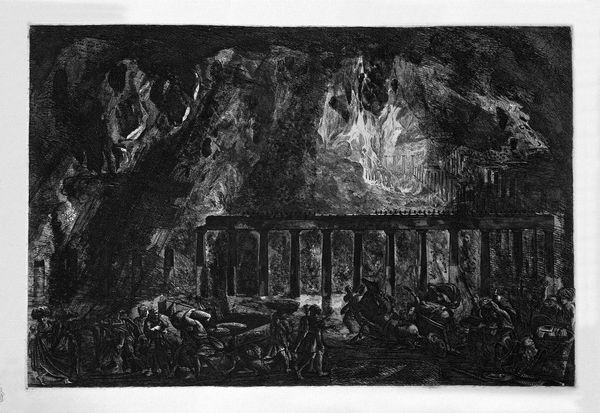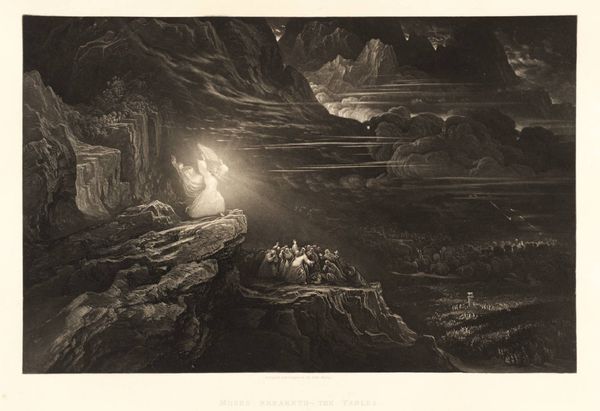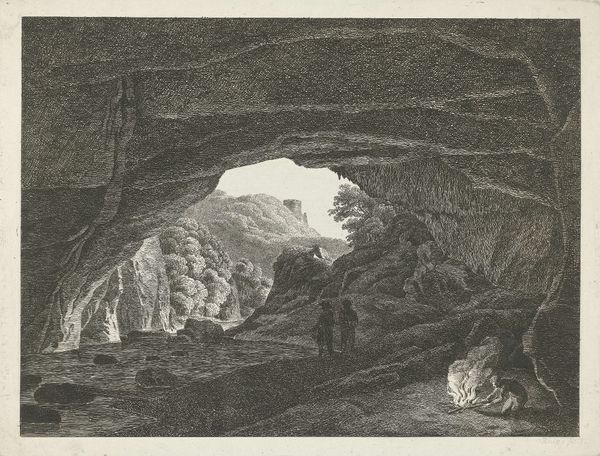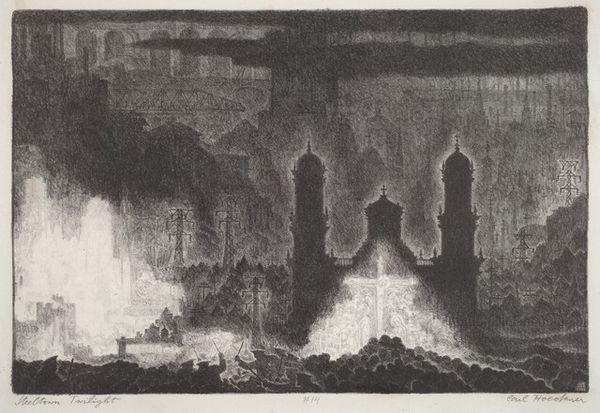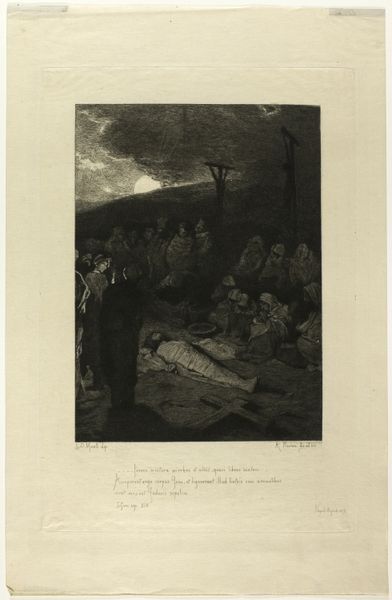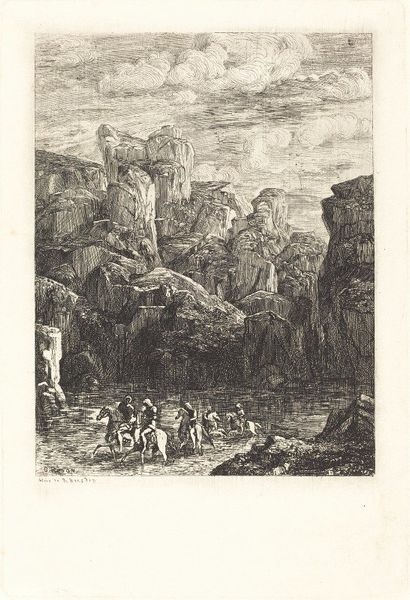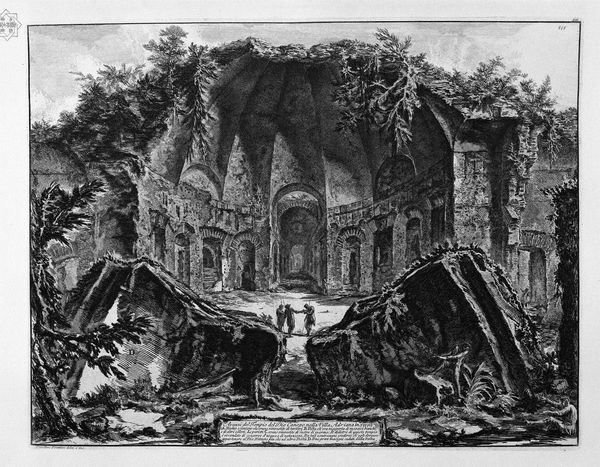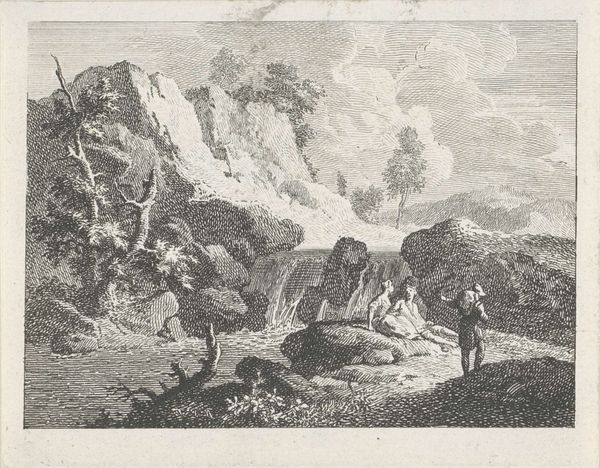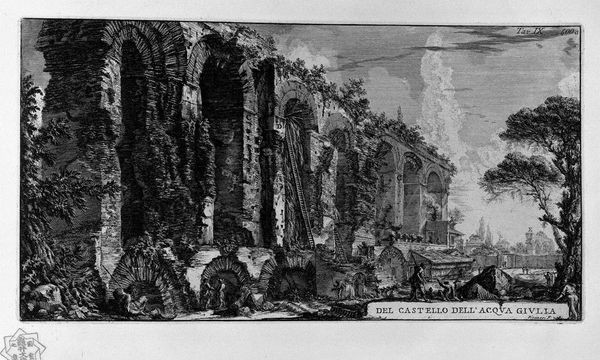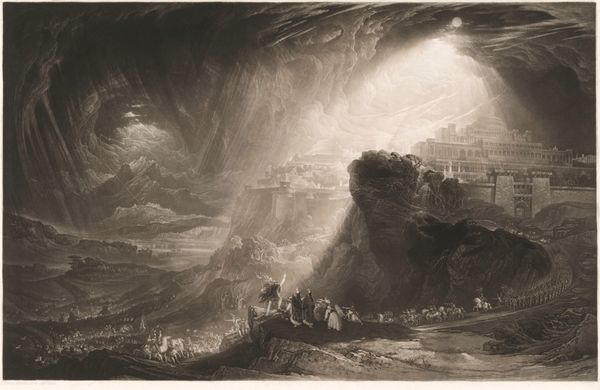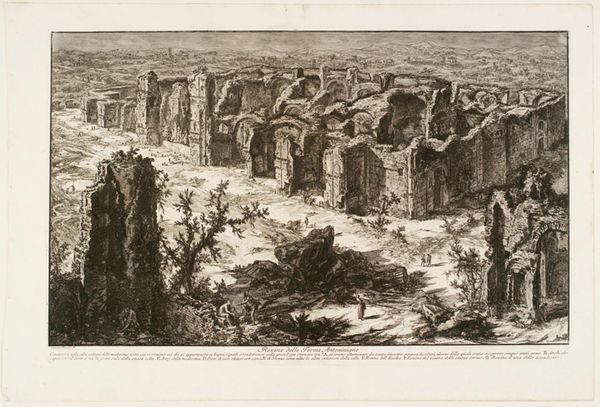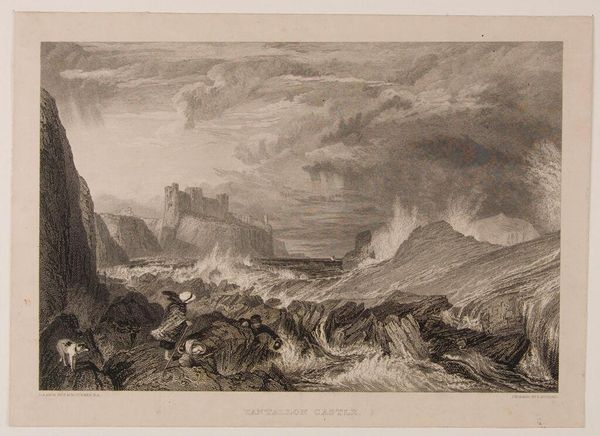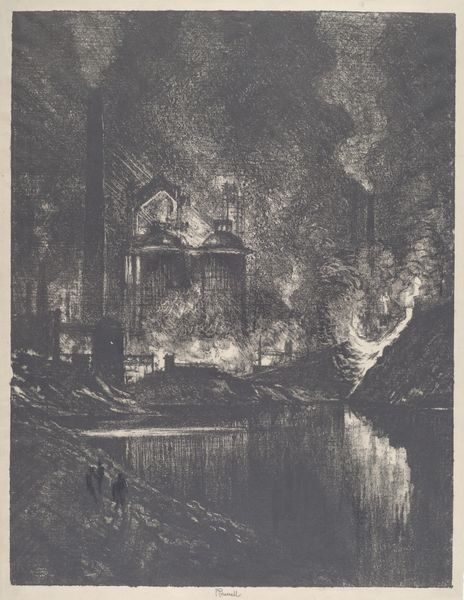
print, etching
#
neoclacissism
#
narrative-art
# print
#
etching
#
landscape
#
cityscape
#
history-painting
Dimensions: height 681 mm, width 1000 mm
Copyright: Rijks Museum: Open Domain
Editor: Here we have Francesco Piranesi's "Ondergang van Pompeï," an etching from around 1797-1817. It's incredibly dramatic, with the sky ablaze and figures scrambling in the foreground. What stands out to you? Curator: The symbolism of destruction here is profound, linking natural disaster with the impermanence of human achievement. Consider the Neoclassical style, meant to evoke order and reason. Yet, Piranesi depicts chaos overwhelming it. What emotional responses does the fiery sky generate within you? Editor: Anxiety, definitely, and a sense of helplessness against overwhelming forces. The columns, while still standing, seem so fragile in comparison. Curator: Precisely. Columns, traditionally symbols of stability and empire, are rendered vulnerable. Notice the contrast: refined architecture set against raw, eruptive power. This contrast invites contemplation on cultural memory. Does it bring to mind any contemporary parallels of societal upheaval and environmental crises? Editor: Now that you mention it, definitely. Thinking about climate change and our own vulnerabilities makes this scene even more resonant. The people fleeing carry their possessions, but the real loss is of a whole civilization. Curator: Consider then how ruins function, reminding us of hubris but also resilience. Piranesi is interested in ruins and absence as cultural cues that allow us to reflect on our lives today, asking ourselves how the story is always repeating in similar ways. This etching is not merely a historical depiction, it is a stark mirror. What has shifted in your thinking about this print? Editor: I see it as more than just a depiction of a past event; it's a powerful commentary on human nature and the cyclical nature of history. Thanks, it makes it much richer now. Curator: Indeed. Visual language is constantly re-interpreted. A deeper look is not only about what the art is, but what it becomes.
Comments
No comments
Be the first to comment and join the conversation on the ultimate creative platform.
